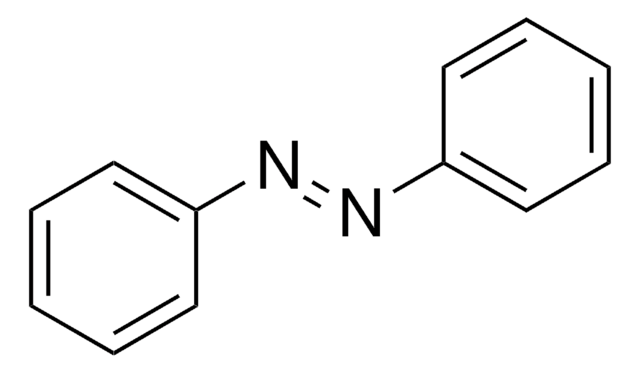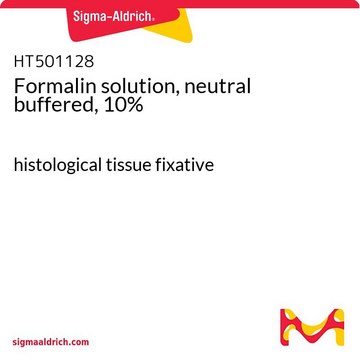모든 사진(2)
About This Item
Linear Formula:
HO(CH2O)nH
CAS Number:
Molecular Weight:
30.03 (as monomer)
MDL number:
UNSPSC 코드:
12352100
PubChem Substance ID:
NACRES:
NA.22
추천 제품
vapor density
1.03 (vs air)
Quality Level
vapor pressure
<1.45 mmHg ( 25 °C)
분석
95%
형태
prilled
autoignition temp.
572 °F
expl. lim.
73 %
mp
120-170 °C (lit.)
전이 온도
sublimation point 150 °C
solubility
alcohol and cold water: slightly soluble
ethers, hydrocarbons and carbon tetrachloride: insoluble
density
0.88 g/mL at 25 °C (lit.)
InChI
1S/CH2O/c1-2/h1H2
InChI key
WSFSSNUMVMOOMR-UHFFFAOYSA-N
유사한 제품을 찾으십니까? 방문 제품 비교 안내
일반 설명
Paraformaldehyde, a polymerization product of formaldehyde, is used in the polycondensation reaction for the synthesis of thermoset polymers.
Paraformaldehyde is also referred as polyoxymethylene. It participates in the regioselective reductive coupling reactions of dienes, alkynes and allenes in the presence of ruthenium catalyst. It also participates in the synthesis of esters, via alkoxycarbonylation of alkenes.
Paraformaldehyde is also referred as polyoxymethylene. It participates in the regioselective reductive coupling reactions of dienes, alkynes and allenes in the presence of ruthenium catalyst. It also participates in the synthesis of esters, via alkoxycarbonylation of alkenes.
애플리케이션
Formaldehyde source to prepare phenol-, urea-, furfuryl alcohol-, resorcinol- and melamine-formaldehyde polymers for use in coatings, wood products, textiles and foundry resins.
Paraformaldehyde may be used in the preparation of azomethine ylide, α-methylenechromanes, α-methylenequinoline and ortho-quinone methides.
특징 및 장점
Source of methanol-free formaldehyde.
Decomposes in hot water to give formaldehyde.
Decomposes in hot water to give formaldehyde.
신호어
Danger
Hazard Classifications
Acute Tox. 4 Inhalation - Acute Tox. 4 Oral - Carc. 1B - Eye Dam. 1 - Flam. Sol. 2 - Muta. 2 - Skin Irrit. 2 - Skin Sens. 1 - STOT SE 3
표적 기관
Respiratory system
Storage Class Code
4.1B - Flammable solid hazardous materials
WGK
WGK 2
Flash Point (°F)
Not applicable
Flash Point (°C)
Not applicable
개인 보호 장비
Eyeshields, Faceshields, Gloves, type P3 (EN 143) respirator cartridges
Ruthenium-Catalyzed Alkoxycarbonylation of Alkenes with Paraformaldehyde as a Carbon Monoxide Substitute.
Liu Q, et al.
ChemCatChem, 6(10), 2805-2809 (2014)
Brannon Sam et al.
Angewandte Chemie (International ed. in English), 54(11), 3267-3274 (2014-11-29)
Ruthenium-catalyzed reductive couplings of paraformaldehyde with dienes, alkynes, and allenes provide access to products of hydrohydroxymethylation that cannot be formed selectively under the conditions of hydroformylation. In certain cases, the regioselectivity of the CC coupling can be inverted by using
J Justin Mulvey et al.
International journal of nanomedicine, 9, 4245-4255 (2014-09-18)
We aimed to create a more robust and more accessible standard for amine-modifying single-walled carbon nanotubes (SWCNTs). A 1,3-cycloaddition was developed using an azomethine ylide, generated by reacting paraformaldehyde and a side-chain-Boc (tert-Butyloxycarbonyl)-protected, lysine-derived alpha-amino acid, H-Lys(Boc)-OH, with purified SWCNT
Tineke Veenendaal et al.
Biology open, 3(6), 431-443 (2014-05-06)
GRASP65 and GRASP55 are peripheral Golgi proteins localized to cis and medial/trans cisternae, respectively. They are implicated in diverse aspects of protein transport and structure related to the Golgi complex, including the stacking of the Golgi stack and/or the linking
Aditi Dubey et al.
PloS one, 11(11), e0165642-e0165642 (2016-11-02)
Selenocysteine (Sec) is a critical residue in at least 25 human proteins that are essential for antioxidant defense and redox signaling in cells. Sec is inserted into proteins cotranslationally by the recoding of an in-frame UGA termination codon to a
자사의 과학자팀은 생명 과학, 재료 과학, 화학 합성, 크로마토그래피, 분석 및 기타 많은 영역을 포함한 모든 과학 분야에 경험이 있습니다..
고객지원팀으로 연락바랍니다.








